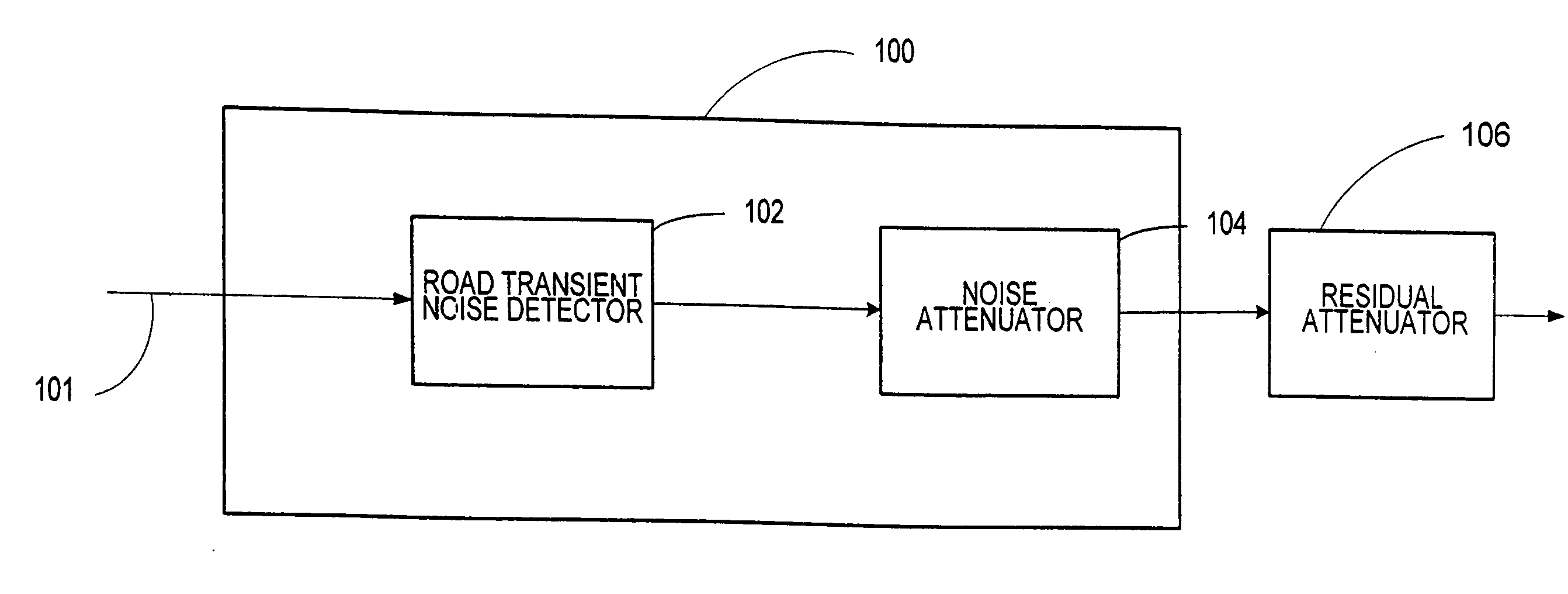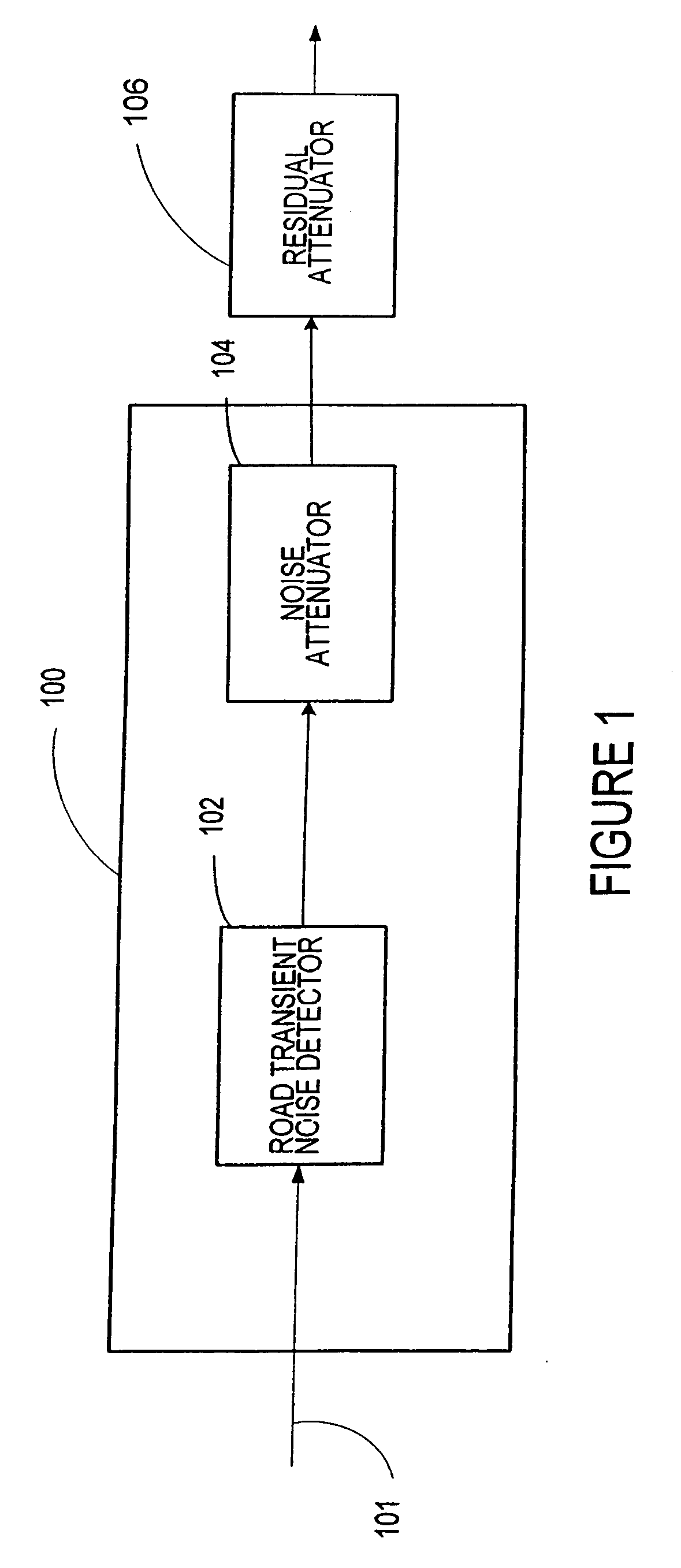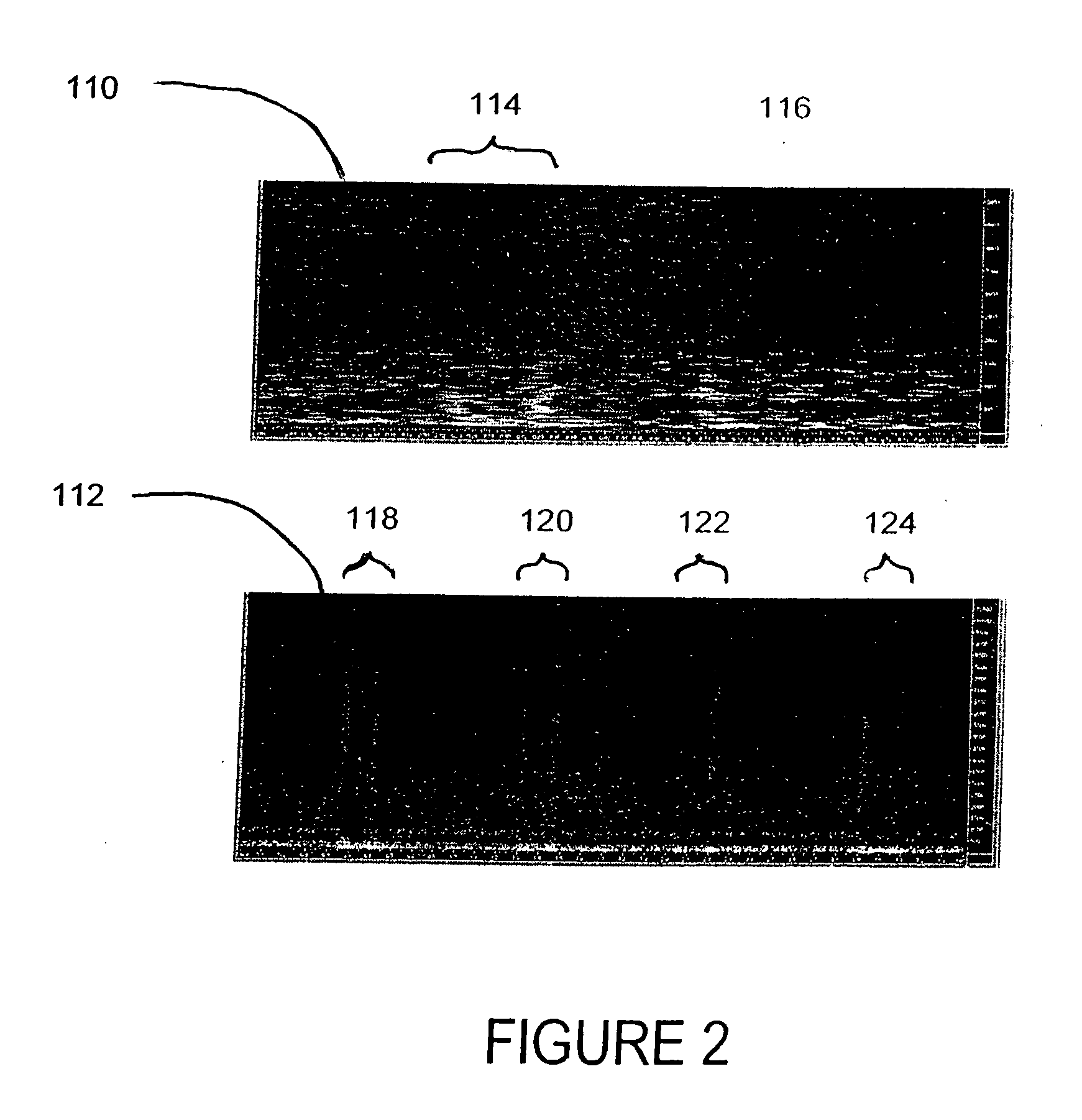Minimization of transient noises in a voice signal
a technology of voice signal and transient noise, applied in the field of acoustics, can solve the problems of destroying information, destroying information, and often affecting the perceptual quality of voice signals, so as to improve the perceptual quality of received voice signals, remove unwanted noise, and improve the perceptual quality of processed voice signals
- Summary
- Abstract
- Description
- Claims
- Application Information
AI Technical Summary
Benefits of technology
Problems solved by technology
Method used
Image
Examples
Embodiment Construction
[0029] A voice enhancement system improves the perceptual quality of a processed voice signal. The system models transient road noises produced when the tires of a moving vehicle, such as an automobile, strike a bump, crack, or other obstacle or imperfection in the road surface over which the vehicle is traveling. The system analyzes a received audio signal to determine whether characteristics of the received audio signal conform to the modeled characteristics of transient road noises. If so, the system may eliminate or dampen the transient road noises in the received signal. Transient road noises may be attenuated in the presence or absence of speech, and transient road noises may be detected and eliminated substantially in real time or after a delay, such as a buffering delay (e.g. 300-500 ms). In addition to transient road noises, the voice enhancement system may also dampen or remove continuous background noises, such as engine noise, and other transient noises, such as wind noi...
PUM
 Login to View More
Login to View More Abstract
Description
Claims
Application Information
 Login to View More
Login to View More - R&D
- Intellectual Property
- Life Sciences
- Materials
- Tech Scout
- Unparalleled Data Quality
- Higher Quality Content
- 60% Fewer Hallucinations
Browse by: Latest US Patents, China's latest patents, Technical Efficacy Thesaurus, Application Domain, Technology Topic, Popular Technical Reports.
© 2025 PatSnap. All rights reserved.Legal|Privacy policy|Modern Slavery Act Transparency Statement|Sitemap|About US| Contact US: help@patsnap.com



